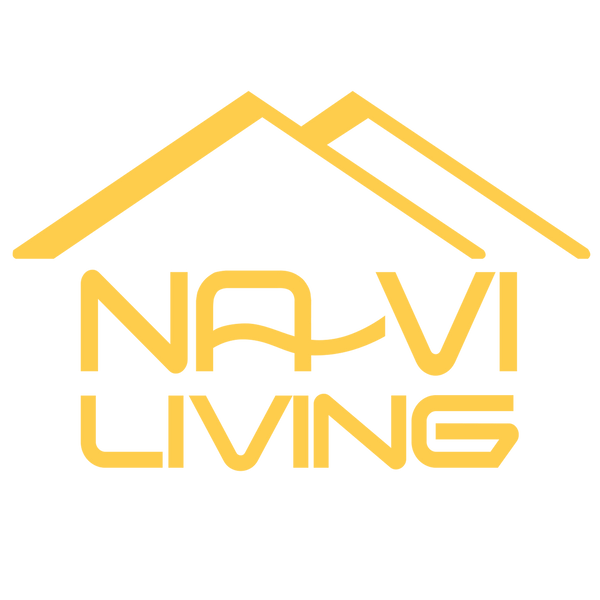Build To Rent (BTR) property management is a specialized approach focused on managing purpose-built rental communities designed for long-term tenants. Effective BTR property management ensures seamless operations, high tenant satisfaction, and maximized returns by combining professional maintenance, responsive services, and community engagement.
- Professional Build to Rent Management - Managers Must Know
- Investing in Build to Rent Long-Term Returns in Canada
- Urban Growth BTR in Canada: Prime Opportunity for Newcomers
Understanding the Build To Rent Market

The Build to Rent (BTR) market is a rapidly growing segment within the real estate industry, driven by increasing demand for high-quality, purpose-built rental homes. Unlike traditional rental properties, BTR developments are specifically designed and constructed to cater to long-term renters, offering a range of amenities and services that enhance tenant experience and community living. This model has gained traction particularly in markets where homeownership is less accessible due to high prices or economic factors such as wage stagnation and student debt burdens.
BTR properties can take various forms, from single-family homes clustered in small-lot communities to multi-unit apartment complexes. These developments often include on-site amenities like gyms, communal spaces, and sometimes retail or leisure options, creating a lifestyle that blurs the line between home and leisure. This approach appeals to a demographic that values flexibility, convenience, and community, including young professionals, families, and downsizers.
From an investment perspective, BTR offers several advantages. It tends to provide stable cash flow with lower vacancy rates compared to other rental investments, largely because the properties and services are tailored to meet tenant needs effectively. Additionally, the scale of BTR projects allows for professional management and operational efficiencies that smaller rental portfolios may lack. However, the initial capital outlay is significant, and success depends heavily on thorough market research, site selection, and a well-executed development and management strategy.
Getting Started With Build To Rent
Starting a Build to Rent project involves multiple critical steps that require careful planning and expertise. The first step is comprehensive market research to identify the ideal renter profile and understand local rental demand, vacancy rates, and competition. This research informs site selection, ensuring the property is located in an area with strong growth potential, good transport links, and desirable amenities.
Once a site is selected, obtaining planning permission is essential and can be time-consuming. Many lenders require planning approval before financing discussions can proceed. Developing a robust finance strategy is crucial, as BTR projects typically need significant capital, which may come from construction loans, private equity, or other sources. Securing financing early with a clear plan helps avoid delays and budget overruns.
Assembling a skilled team is another vital step. This team should include architects, builders, property managers, legal experts, and marketing professionals who understand the nuances of BTR development and management. The design phase should focus on creating properties that meet the lifestyle expectations of the target demographic, including accessibility and attractive on-site amenities.
After construction, the focus shifts to lease-up and stabilization. Effective marketing strategies and competitive rental rates are necessary to attract and retain tenants. Offering incentives such as move-in specials can help achieve occupancy targets quickly. Once stabilized, refinancing options can be explored to convert construction loans into long-term, fixed-rate financing, improving the project's financial sustainability.
For investors looking to enter the BTR market without building from scratch, purchasing units from reputable developers is an alternative. This approach often involves buying pre-sold properties at a lower price point and benefits from the developer’s expertise in design and market positioning. Evaluating the developer’s track record and the quality of the units is essential to ensure steady tenant demand and cash flow.
Significance in Property Management

Property management is an indispensable function within the real estate sector, serving as the critical link between property owners and tenants. Its significance extends beyond basic upkeep and rent collection, encompassing strategic asset management, tenant relations, legal compliance, and financial optimization. As the rental market evolves with rising tenant expectations, regulatory changes, and technological advancements effective property management is more important than ever to ensure properties remain competitive, profitable, and sustainable.
- Sustaining and Increasing Property Value Over Time
Properties that are professionally managed tend to retain their market value and appreciate faster. This is due to consistent maintenance, timely upgrades, and adherence to safety standards, which collectively prevent deterioration and enhance curb appeal. Well-maintained properties also attract higher-quality tenants willing to pay premium rents. - Creating a Positive Tenant Experience
Tenant satisfaction is a key driver of occupancy rates and lease renewals. Property management teams that prioritize tenant needs—such as fast maintenance response, transparent communication, and community-building activities—cultivate a positive living environment. Happy tenants reduce turnover costs and generate positive word-of-mouth referrals. - Navigating Complex Legal and Regulatory Frameworks
Property managers serve as experts in landlord-tenant laws, fair housing regulations, eviction procedures, and safety codes. Their knowledge helps prevent costly legal disputes, ensures leases are compliant, and protects owners from liability. This is especially critical in jurisdictions with rapidly changing housing laws. - Optimizing Financial Performance and Cash Flow
Effective property management involves strategic rent setting based on market data, efficient rent collection processes, and diligent expense management. This results in improved cash flow stability and maximized net operating income (NOI), which is essential for meeting debt obligations and funding future investments. - Reducing Vacancy and Turnover Costs
Vacancy periods and tenant turnover are significant cost drivers in property management. Skilled managers use marketing strategies, tenant screening, and lease renewal incentives to minimize vacancies. This continuous occupancy ensures steady revenue streams and lowers marketing and renovation expenses associated with tenant turnover. - Supporting Investor Confidence and Portfolio Growth
For real estate investors, especially those with multiple properties, reliable property management provides peace of mind and operational scalability. Detailed reporting, performance analytics, and professional oversight enable investors to make informed decisions about acquisitions, dispositions, and capital improvements. - Promoting Sustainability and Social Responsibility
Increasingly, property management incorporates green building practices, energy efficiency, and community engagement programs. These initiatives not only reduce operational costs but also appeal to environmentally conscious tenants and investors, enhancing the property’s reputation and marketability.
Emerging Trends Amplifying Property Management’s Importance
- Rise of Build to Rent (BTR) Developments
BTR communities are designed for long-term rental living with a focus on lifestyle and amenities. Managing these properties requires a specialized approach that balances community management, service delivery, and operational efficiency. - Technology Integration and Smart Buildings
The adoption of smart home technologies, IoT devices, and AI-driven management tools is transforming property management by enabling predictive maintenance, energy management, and enhanced tenant communication. - Increased Focus on Tenant Well-being
Post-pandemic, there is heightened attention on health, safety, and wellness amenities. Property managers now play a critical role in implementing sanitation protocols, air quality monitoring, and wellness programs.
Efficient Property Management Solutions

- Comprehensive Property Management Software
Platforms like Yardi, AppFolio, Buildium, and others provide integrated solutions for lease management, accounting, maintenance tracking, and tenant communications. These tools reduce manual work, improve accuracy, and provide real-time insights into property performance. - Automated Rent Collection and Financial Management
Online portals allow tenants to pay rent electronically, set up auto-pay, and receive instant receipts. Automation reduces late payments and administrative overhead while improving cash flow predictability. - Robust Tenant Screening and Leasing Automation
Advanced screening tools use AI and big data to evaluate tenant applications quickly and accurately, reducing the risk of defaults. Digital lease signing and document management speed up the leasing process and ensure compliance. - Predictive Maintenance Using IoT and AI
Smart sensors monitor critical systems such as HVAC, plumbing, and elevators, alerting property managers to potential issues before they become costly repairs. This proactive approach extends asset life and reduces downtime. - 24/7 Tenant Support and Communication Channels
Mobile apps, chatbots, and dedicated service portals provide tenants with instant access to support and maintenance requests, improving satisfaction and retention. - Energy Management and Sustainability Tools
Smart meters, energy-efficient appliances, and renewable energy sources help reduce utility costs and carbon footprints. Sustainability certifications increase property value and appeal. - Data Analytics and Reporting Dashboards
Real-time dashboards provide actionable insights on occupancy rates, rent collection, maintenance costs, and tenant feedback. Data-driven decisions improve operational efficiency and strategic planning. - Flexible Management Models
Property owners can choose from full-service management, self-management with software support, or hybrid models that outsource specific functions. This flexibility allows customization based on portfolio size, budget, and expertise. - Community Engagement and Value-Added Services
Organizing social events, fitness classes, and resident programs fosters community spirit and tenant loyalty. Offering concierge services, package delivery management, or co-working spaces adds value and differentiates properties.
Comprehensive Guide to Asset Management in Build To Rent (BTR)
Managing assets in the Build To Rent (BTR) sector is a multifaceted process that requires meticulous planning, operational excellence, and a tenant-centric approach. As BTR developments grow in popularity globally, investors and property managers must adopt advanced strategies to maximize returns while delivering exceptional living experiences. This guide dives deeper into key areas of BTR asset management, offering actionable advice and best practices.
1. Deep Understanding of the BTR Business Model
- Long-Term Rental Focus
Unlike traditional buy-to-let properties, BTR is designed for long-term rental stability. This means asset management must prioritize tenant retention through superior service, community-building, and consistent property quality. - Economies of Scale and Centralized Control
BTR projects often involve hundreds or thousands of units under one ownership, allowing for centralized management systems that improve operational efficiency and reduce costs. - Integration of Lifestyle and Convenience
Modern BTR developments offer lifestyle-driven amenities such as coworking spaces, wellness centers, and smart home features. Managing these requires coordination across multiple service providers and continuous tenant engagement.
2. Strategic Asset Planning and Lifecycle Management
- Asset Lifecycle Approach
View the property as a long-term investment with distinct phases: acquisition, stabilization, operation, and eventual disposition or redevelopment. Each phase requires tailored management strategies. - Capital Expenditure Planning
Develop a multi-year capital improvement plan to budget for upgrades, renovations, and technology refreshes that keep the property competitive and compliant with evolving standards. - Risk Management and Contingency Planning
Identify potential risks such as market downturns, regulatory changes, or unexpected maintenance issues. Establish contingency reserves and insurance coverage to mitigate financial impact.
3. Advanced Tenant Acquisition and Retention Strategies
- Data-Driven Marketing and Leasing
Utilize market analytics and tenant profiling to target the right demographics with tailored marketing campaigns. Digital platforms and virtual tours can accelerate lease-up rates. - Flexible Leasing Options
Offer lease terms that balance tenant flexibility with financial stability, such as 12-month leases with renewal incentives or furnished units for short-term needs. - Personalized Tenant Services
Implement concierge services, package delivery management, and personalized communication to enhance tenant satisfaction and loyalty. - Proactive Lease Renewal Programs
Engage tenants well before lease expiry with renewal offers, loyalty rewards, and service improvements to reduce turnover.
4. Excellence in Maintenance and Facility Management
- Predictive Maintenance Using Technology
Deploy IoT sensors and AI analytics to monitor equipment health and predict failures, enabling maintenance before breakdowns occur, reducing downtime and costs. - Sustainable Maintenance Practices
Incorporate eco-friendly materials and energy-efficient systems in maintenance routines to reduce environmental impact and operating expenses. - Vendor Management and Quality Control
Establish strong relationships with trusted contractors and suppliers, set clear service level agreements (SLAs), and regularly audit work quality. - Emergency Preparedness and Response
Train staff and tenants on emergency protocols, maintain emergency equipment, and conduct regular drills to ensure safety and minimize damage during crises.
5. Financial Management and Performance Optimization

- Dynamic Rent Pricing Models
Use real-time market data and competitive analysis to adjust rents dynamically, maximizing revenue without compromising occupancy. - Comprehensive Budgeting and Forecasting
Prepare detailed operating budgets and cash flow forecasts, incorporating seasonal trends and planned capital projects. - Transparent Financial Reporting
Provide investors with clear, timely reports including key performance indicators (KPIs) such as occupancy rates, net operating income (NOI), and return on investment (ROI). - Expense Control and Cost Efficiency
Continuously review operational expenses, negotiate vendor contracts, and implement energy-saving initiatives to improve margins.
6. Leveraging Technology for Smarter Management
- Integrated Property Management Platforms
Adopt platforms that unify lease management, maintenance tracking, communication, and financial reporting to streamline workflows and data accuracy. - Tenant Experience Apps
Provide tenants with mobile apps for rent payments, maintenance requests, community news, and amenity bookings, enhancing convenience and engagement. - Smart Building Automation
Implement building automation systems for lighting, HVAC, security, and access control to improve efficiency and tenant comfort. - Data Analytics and AI Insights
Analyze tenant behavior, maintenance trends, and financial data using AI tools to identify opportunities for operational improvements and strategic growth.
7. Building a Thriving Tenant Community
- Community Engagement Programs
Organize social events, fitness classes, workshops, and holiday celebrations to foster a sense of belonging and encourage tenant interaction. - Feedback Loops and Continuous Improvement
Regularly survey tenants to gather feedback on services and amenities, then act on insights to enhance the living experience. - Inclusive and Accessible Living Spaces
Design and manage properties to be inclusive for all ages and abilities, incorporating universal design principles and accessible amenities. - Health and Wellness Initiatives
Promote wellness through on-site fitness facilities, green spaces, air quality monitoring, and mental health resources.
8. Compliance, Governance, and Sustainability
- Regulatory Compliance Management
Stay current with local housing laws, safety codes, and environmental regulations. Maintain documentation and conduct regular audits to ensure compliance. - Governance and Ethical Standards
Implement transparent governance policies, ethical tenant screening, and fair housing practices to build trust and reputation.
Sustainability and Green Certifications
Pursue certifications such as LEED, WELL, or ENERGY STAR to demonstrate commitment to sustainability, attract eco-conscious tenants, and potentially reduce operating costs.
9. Scaling and Portfolio Management
- Standardized Operating Procedures (SOPs)
Develop SOPs for all aspects of property management to ensure consistency and quality across multiple BTR assets. - Centralized Management Teams
Build centralized teams or hubs that oversee multiple properties, leveraging economies of scale and shared expertise. - Performance Benchmarking
Regularly benchmark portfolio performance against market standards and peers to identify areas for improvement. - Strategic Expansion Planning
Use data-driven insights to identify new markets and acquisition opportunities aligned with portfolio goals.
Conclusion
Build to Rent (BTR) property management focuses on professionally managing purpose-built rental communities, offering tenants high-quality living spaces, on-site amenities, and responsive services. Effective BTR management enhances tenant satisfaction, reduces vacancies, and maximizes investor returns.




